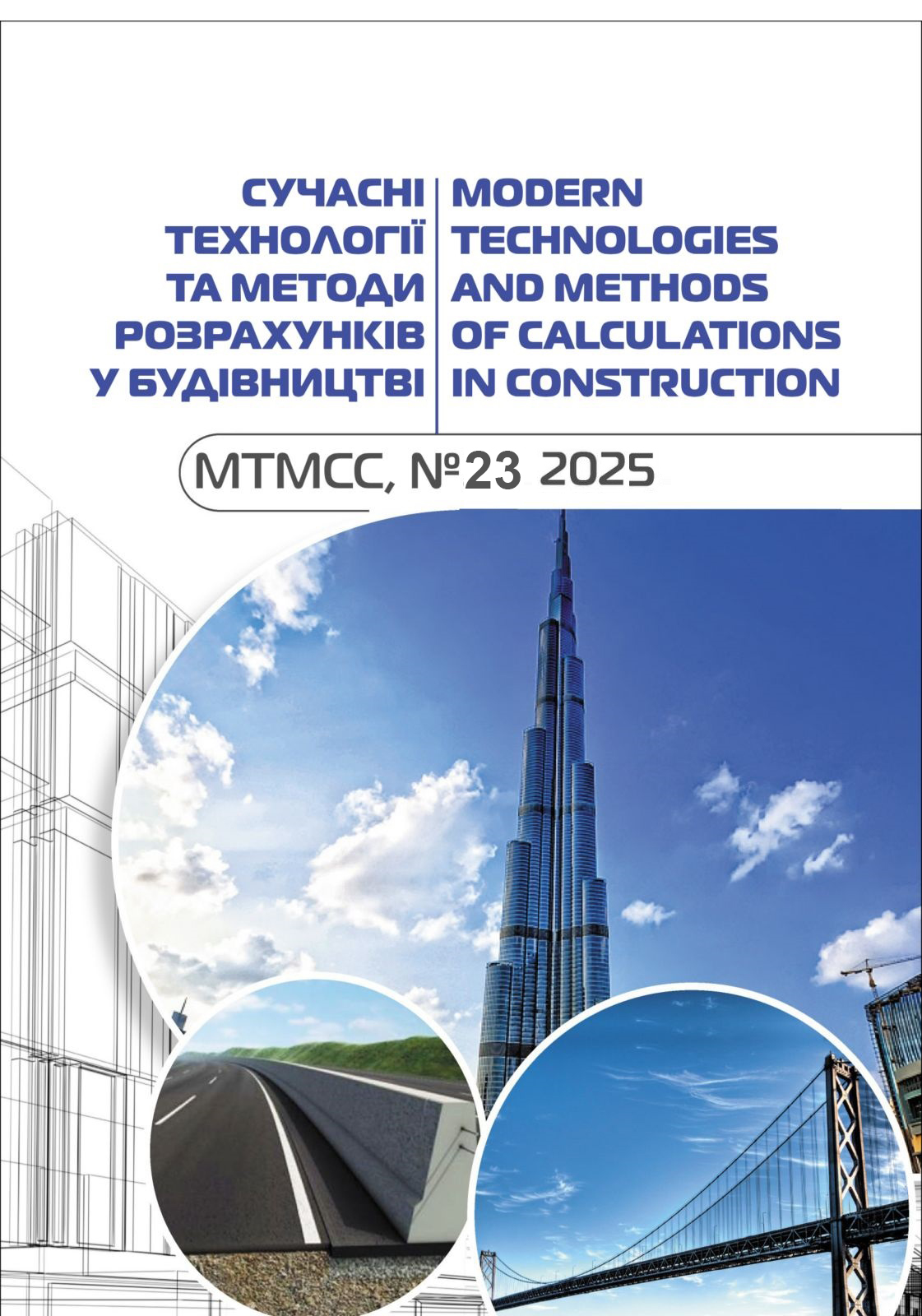Дослідження роботи фібробетону при використанні різних армуючих волокон
Abstract
This article presents the results of an experimental study on the mechanical behavior of fiber-reinforced concrete using various types of dispersed reinforcement, including steel, polypropylene fibers. The primary objective of the study is to evaluate the effect of fiber type and content on compressive strength, flexural tensile strength, and crack resistance under service load conditions. The main advantages of fiber-reinforced concrete structures include the reduction of labor costs associated with traditional reinforcement works and the integration of technological operations — the processes of mixing, reinforcing, placing, and compacting occur simultaneously.
The experimental program was based on the principles of mathematical planning, which allowed for a reduction in the volume of tests while ensuring the reliability of the results. It was found that the introduction of fibers significantly increases the ductility and durability of concrete, especially under flexural and cyclic loading.
The study demonstrated that combined reinforcement (with steel and synthetic fibers) creates a synergistic effect, improving the crack-bridging capacity of the concrete and increasing its fracture resistance. The use of polypropylene fibers contributes to a reduction in water permeability and enhances the concrete's performance in aggressive environments. The findings confirm the feasibility of using fiber-reinforced concrete as an effective material for rigid pavement structures and other construction elements subjected to intensive loading and adverse environmental conditions.
An increase in fiber content leads to an increase in flexural strength at all stages of hardening and demonstrates a non-linear (extremal) character. This indicates the existence of optimal dosages for steel fiber (80–100 kg) and polypropylene fiber (2–3 kg). The combined use of steel and polypropylene fibers allows for an increase in the efficiency coefficient of dispersed reinforcement, defined as the ratio of flexural tensile strength to compressive strength.








